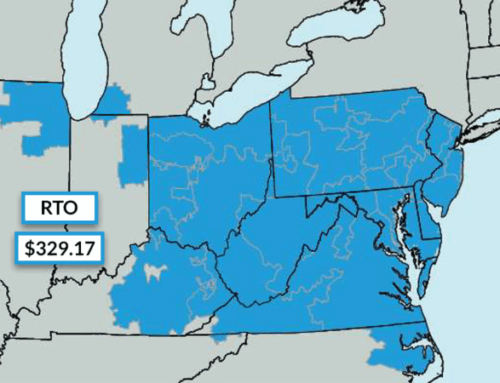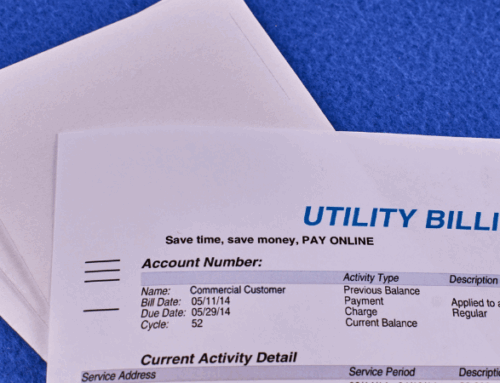As the central energy grid continues to face both infrastructure and energy security challenges, microgrids are becoming a popular alternative to traditional power distribution. Microgrids are small, self-sufficient energy systems and are playing an increasingly important role in grid modernization and distributed energy systems. In this article, we explore the concept of microgrids, how commercial energy customers are benefiting from this technology, and the role of distributed energy in the global energy transition.
What Is A Microgrid?
A microgrid is a localized energy system designed to generate, distribute, and store electricity within a specific area, such as a commercial building, campus, or residential community. Microgrids operate independently of the traditional, central energy grid and only remain connected to the grid for backup or energy trading purposes.
The dual functionality of these systems allows them to provide reliable power to customers during grid outages while supporting overall power system stability when not being utilized by their off-takers. By incorporating renewable energy sources like solar panels and battery storage can also play roles in the ancillary services and capacity markets, turning them into revenue-generating assets. These systems are starting to become prominent in modern energy strategies by offering flexible solutions to meet the growing consumer demand, enhancing energy security, and providing support to the overall transmission network.
The Types Of Microgrids
When deciding what type of system to design and install, energy customers must evaluate their needs and risk tolerance. There are generally three distinct types of microgrids available in the market today.
1. Grid-Connected Microgrids
These systems are designed to be connected to the central grid for backup and energy trading. They are often utilized by energy consumers as a backup power supply when the central grid is experiencing an outage. When they are not being utilized, these systems can participate in wholesale electricity markets and earn revenue by supporting the overall electricity grid and its needs for generation.
2. Remote Microgrids
These are standalone systems serving areas with no grid access, often powered by renewables like solar and wind. These systems are utilized on oil and gas drilling sites where there is limited access to power supply. They can also be developed for rural communities that do not wish to tie into the centralized electricity grid. While more expensive to install and operate, these systems can bring many benefits to customers by limiting their reliance on the central power system.
3. Hybrid Microgrids
These power systems combine grid connection with independent functionality, using various energy sources like solar, wind, and batteries. Hybrid systems allow consumers to utilize them as a primary source of energy while selling excess generation back to the ISO or RTO for income. Furthermore, hybrid grids are advantageous as the end user can still utilize grid power if the hybrid system is unable to generate enough supply to meet demand.
The Pros and Cons of Microgrid Technology
As microgrids become more and more popular in the modern energy economy, we must explore the upsides and downsides of the technology.
Pros
Some of the advantages of installing a microgrid system for on-site power demand include:
- Increased energy reliability and resilience during grid outages.
- Support for renewable energy integration and grid decarbonization.
- Reduction in transmission line losses and dependence on centralized energy.
- Enable localized energy independence and cost optimization for communities.
Cons
On the other hand, microgrids come with an array of challenges. Some of the disadvantages include:
- High upfront costs for infrastructure and installation.
- Technical challenges integrating microgrid control systems with the main power grid.
- Complex regulatory and interconnection requirements for those participating in wholesale energy markets.
- Limited economies of scale compared to centralized systems.
Economics
The cost of a microgrid can vary significantly depending on its size, energy sources, and technology.
Costs
Small residential systems, often powered by solar panels and battery storage, can cost between $10,000 to $50,000, while larger commercial or industrial designs that integrate multiple energy sources can range from $1 million to over $10 million. These larger systems often include advanced control technologies and energy storage, which contribute to higher upfront costs.
Incentives
Current government incentives and rebates related to renewable energy can significantly offset these expenses, making microgrids more financially feasible. Programs such as tax credits for renewable energy installations and grants for grid modernization can improve the total return on investment.
Income
If designed properly, some microgrid systems can be turned into revenue-generating assets. When integrated with the central electric system, batteries can earn revenue for frequency regulation, spinning reserves, and non-spinning reserves. The system can also participate in the real-time and day-ahead markets by discharging excess energy into the electric system and being compensated for doing so.
Furthermore, if the system is only being utilized for emergency backup, it can be placed into the capacity markets and earn revenue from the RTO or ISO for its capacity commitment. These revenue opportunities need to be analyzed carefully, however, as once the assets are committed to the ancillary services or capacity markets, they cannot be utilized as a backup resource at the same time.
Challenges
Microgrids and distributed energy systems come with an array of challenges, specifically centered around their cost and deployment. Let’s explore some of these challenges in more detail.
Cost
First and foremost, these systems can be very costly to design and install. While solar and wind have the lowest cost of energy output after they are constructed, building these energy systems is very capital intensive. Furthermore, battery energy storage systems are notoriously expensive as new technologies have not advanced quickly enough to bring down costs in the supply chain. Without specific government and utility incentives, microgrids would be cost prohibitive.
Grid Integration
For hybrid and grid-connected systems, integrating into the utility grid or RTO/ISO has its own set of challenges. Grid operators have stringent interconnection requirements that often require microgrids to register as generating assets if they want to participate in energy, ancillary, and capacity markets. The interconnection queue is very long and can take years to gain the necessary approvals to operate. Furthermore, after an asset is live, it requires intense 24/7 management and operation in order to deploy it successfully into the market.
Utility-connected systems coupled with net metering are less challenging to install and operate as the utility company manages the billing and energy credit process.
The Role Of Microgrids In The Energy Transition
Microgrids are beginning to play an important role in the global energy transition. As most centralized electric grid networks are predominantly based on fossil fuel generation, it will take years to modernize these archaic systems and replace fossil generation with renewable energy. Microgrids allow end users to bypass the grid and directly produce renewable energy on-site. Their ability to operate independently or in conjunction with the main grid make them essential for climate adaptation and disaster preparedness.
Additionally, microgrids empower communities and businesses to manage energy consumption more efficiently, aligning with the broader push toward sustainable and decentralized energy systems. By bridging the gap between traditional grid infrastructure and emerging clean technologies, microgrids are accelerating the shift to a more resilient and sustainable energy future.
Interested In Exploring Microgrid Technology?
In summary, microgrids are transforming the energy landscape by fostering resilience, efficiency, and sustainability. As businesses and communities look for innovative ways to meet energy demands while aligning with sustainability goals, microgrids stand out as a versatile and impactful solution.
If you’re ready to explore how microgrids can benefit your operations or enhance your energy strategy, Diversegy is here to help. Our expertise in energy solutions, microgrid technologies, and grid modernization can help you navigate the complexities of these advanced energy technologies.



